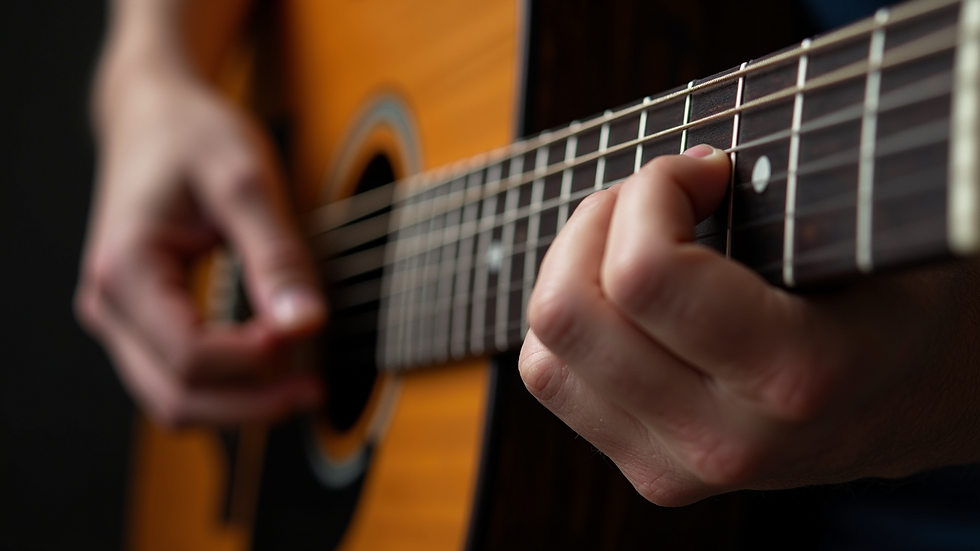Finger Pain and Calluses: The New Player’s Survival Guide
- nicholaskincaid
- Aug 14
- 4 min read
As a new player in sports or activities that involve repeated finger movements, you may encounter an unexpected challenge: finger pain and calluses. Whether you are strumming a guitar, playing tennis, or engaging in a craft, discomfort can be disheartening. This guide provides insights and strategies to manage finger pain and calluses effectively, so you can fully enjoy your new passion without unnecessary discomfort.
Understanding Finger Pain
Finger pain can come from various sources, such as overuse, improper technique, or even underlying medical issues. For new players, repetitive strain is often the main culprit. Activities that demand the same finger movements repeatedly can lead to inflammation and pain in tendons and muscles. In fact, a study indicated that up to 40% of musicians experience finger pain at some point in their playing journey.
Symptoms of Finger Pain
Recognizing the symptoms is essential for early intervention. Common signs include:
Aching or throbbing: A dull pain that worsens with activity.
Swelling: Puffiness around joints or tendons.
Stiffness: Difficulty moving fingers, especially after inactivity.
If you experience these symptoms, it is important to take action and adjust your practice routine.
The Role of Calluses
Calluses are thickened skin areas that develop as a protective response to friction and pressure. While they might not look great, they play a vital role: they shield your skin from more damage. Calluses often form on fingertips due to repeated contact with instruments, sports equipment, or tools.
Benefits of Calluses
Despite feeling uncomfortable at times, calluses have several advantages:
Protection: They prevent blisters and abrasions, which is especially important for musicians and athletes.
Improved grip: Calluses can enhance your grip, allowing better control of instruments or sports equipment.
Adaptation: Over time, your skin gets used to the activity, reducing sensitivity and discomfort.
However, managing calluses is key to preventing them from becoming too thick or painful.
Tips for Managing Finger Pain
Here are practical strategies to help you effectively manage finger pain:
1. Warm-Up and Stretch
Before starting any activity, take a few minutes to warm up your fingers. Simple stretches increase blood flow and flexibility. Try gently bending and extending your fingers or using a stress ball for grip strength.
2. Use Proper Technique
Using the right technique can prevent finger pain. Invest time into learning the correct form for your activity, whether it is playing an instrument or gripping a racquet. Seeking guidance from a coach or an experienced player can make a big difference in your performance and comfort.
3. Take Breaks
It's crucial to give your fingers time to rest. Schedule regular breaks during practice sessions to let your muscles and tendons recover. This practice can significantly reduce overuse injuries; research shows that taking short breaks every 30 minutes can reduce strain injuries by nearly 60%.
4. Ice and Elevate
For swelling or acute pain, apply ice to the affected area to reduce inflammation. Elevating your hand can also help minimize swelling.
5. Consider Ergonomic Tools
If your activity involves tools or equipment, consider ergonomic options that reduce strain on your fingers. For example, many guitarists find that using lighter strings or specially designed grips can prevent discomfort during extended play.
Caring for Calluses
While calluses are a natural response to new activities, proper care is essential to prevent complications.
1. Moisturize
Keeping calluses moisturized helps to prevent cracking and discomfort. Use a thick lotion or cream designed for hands and feet, applying it regularly for the best results.
2. File Down Excess Skin
If calluses become too thick, gently file them down with a pumice stone or foot file. However, be careful not to remove too much skin, as this can lead to pain and sensitivity.
3. Protect Your Skin
If certain activities exacerbate calluses, consider wearing protective gloves or finger sleeves. These items can help minimize friction and pressure on your skin, making practice more comfortable.
4. Monitor Changes
Keep an eye on your calluses and any changes in your skin. If you notice excessive pain, bleeding, or signs of infection, consult a healthcare professional for advice.
When to Seek Professional Help
While finger pain and calluses are common among new players, certain situations require professional help. Seek medical advice if you experience:
Persistent pain that does not improve with rest
Severe swelling or bruising
Numbness or tingling in your fingers
It's crucial to consult a healthcare provider for proper assessment and treatment options.
Wrapping Up
Finger pain and calluses are frequent hurdles for new players, but they do not have to derail your passion. By understanding the causes of finger pain, managing calluses effectively, and applying practical strategies, you can continue to enjoy your chosen activity without unnecessary discomfort. Remember, patience and proper care are essential to adapting to new skills. Embrace your journey, and soon you’ll find that your fingers not only grow stronger but also become more resilient.









Comments